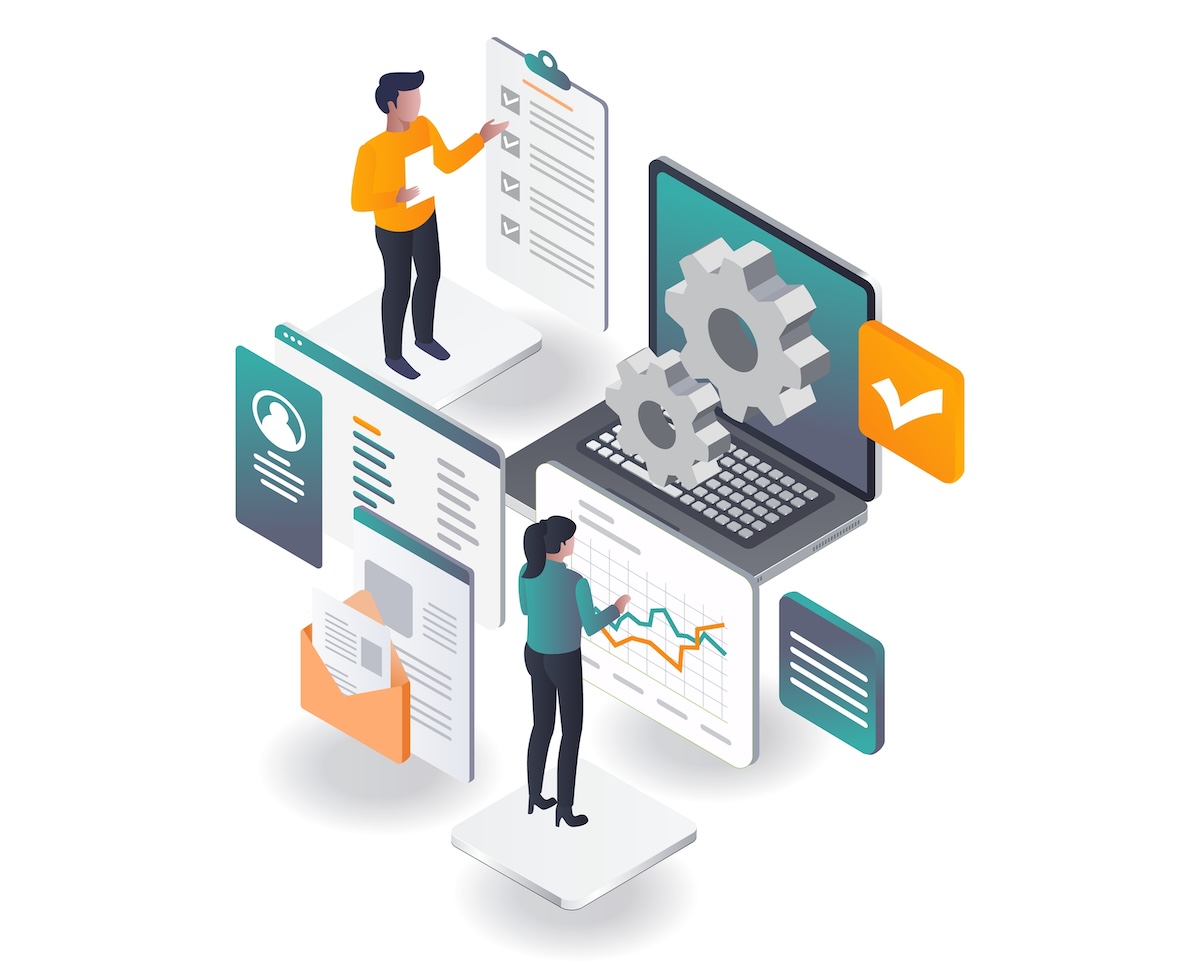Navigating ERP implementation challenges can be daunting. This practical guide breaks down common obstacles and offers proven strategies to ensure your implementation’s success.
Embarking on an Enterprise Resource Planning (ERP) system implementation is a significant decision for any business, especially those in the convenience store distribution industry. With complex supply chains and rapid transaction cycles, implementing an ERP system will transform your core operations and enhance data-driven decision-making. However, the transformation journey comes with its set of potential hurdles: budget overruns, extended timelines, and disruptions to daily operations can derail even the most meticulously planned projects.
This guide is tailored to help you navigate these challenges within the convenience store distribution context, equipping you with the knowledge and strategies to manage your ERP implementation effectively. By the end of this article, you’ll be better prepared to ensure your ERP project enhances operational efficiency and meets the dynamic needs of the distribution market.
Understanding the Unique Challenges in Convenience Distribution
Implementing an ERP system in the convenience store distribution sector presents unique challenges due to the specific nature of the products and the rapid dynamics of the market. Here are some of the common challenges faced by distributors in this sector:
- Inventory Complexity: Convenience store distributors handle a diverse range of products, from perishables with short shelf lives to non-perishables and high-demand items like tobacco. Each category requires different handling and turnover rates, making inventory management particularly complex.
- Regulatory Compliance: Distributors of regulated products like tobacco encounter stringent regulatory requirements that vary widely by region. Compliance demands meticulous tracking and reporting.
- Supply Chain Dynamics: The rapid transaction cycles typical in convenience store distribution necessitate a highly responsive supply chain. Delays in replenishment or inaccuracies in order tracking can lead to significant disruptions and lost sales.
The right ERP system – one tailored for the convenience distribution industry like DAC by CDR Software – helps address these challenges. By providing advanced inventory management features, compliance management tools, and real-time data capabilities, our ERP enhances the responsiveness and efficiency of supply chain operations. This strategic support is crucial for maintaining operational effectiveness and compliance with regulatory standards.
With these challenges in mind, let’s delve into how strategic planning can serve as the foundation for successful convenience distribution ERP implementation.
Strategic Planning: Laying the Foundation for ERP Success
Strategic planning is crucial for a successful ERP implementation, especially in the fast-paced environment of convenience store distribution. This section discusses how to set a solid strategic foundation to ensure your ERP initiative aligns with your business goals.
Engaging Stakeholders
Challenge: Successful ERP implementation requires buy-in from various departments, each with its own priorities and concerns. Gaining consensus can be challenging, particularly when different teams are impacted in distinct ways by the new system.
Solution: Involve stakeholders from all relevant departments early in the planning process. Use workshops and meetings to gather input and ensure that the ERP system’s capabilities align with the needs of each department, from sales and finance to warehousing and logistics. This collaborative approach not only ensures that the system will meet the diverse needs of the business but also helps in securing widespread buy-in, which is critical for smooth adoption.
Developing a Project Plan
Challenge: Without a detailed and realistic project plan, ERP implementations can experience scope creep, budget overruns, and missed deadlines, particularly when customizing the system to handle the complexities of convenience store distribution.
Solution: Create a comprehensive project plan that outlines all phases of your convenience distribution ERP implementation, from initial needs assessment through to go-live and beyond. The plan should include clear milestones, budget projections, and risk management strategies. It should also account for the specific challenges of the distribution industry, such as the need for precise inventory control and rapid order processing.
Key Strategy
Implement regular checkpoints and updates in the project plan to accommodate the fast-changing inventory and promotional strategies typical in convenience store distribution. This flexibility is vital for adjusting to unexpected challenges that frequently arise due to the industry’s rapid response to market trends.
With a strategic plan in place, the next step is determining the right balance between customization and standardization. This decision is critical, as it affects how well the ERP system will cater to specific needs without compromising future adaptability and cost-efficiency.
Related: Mastering ERP Implementation: A Guide for Distributors

Customization vs. Standardization: Finding the Right Balance
Deciding between customization and standardization of your ERP system is a critical decision that can significantly impact the success of your implementation.
Customization Benefits and Risks
Challenge: While customization can make an ERP system perfectly fit the unique processes of a convenience store distributor, excessive customization can lead to increased costs, extended implementation times, and complications during future system upgrades.
Solution: Prioritize customization for features that directly impact competitive advantage and operational efficiency, such as specialized inventory management for perishables or automated compliance reporting for regulated products. Use standard functionalities for common business processes to minimize costs and complexity.
Standardization Advantages
Benefit: Standardization leverages the ERP vendor’s expertise and industry best practices, which can help streamline operations and reduce the risk of errors. Standard features are generally well-supported and receive regular updates from the vendor.
Key Strategy: Start with a core system that meets the bulk of your needs, and carefully evaluate whether each additional module, add-on, or customization is justified by a return on investment. This approach helps maintain system integrity and ensures easier support and upgrades.
Once you’ve struck the right balance between customization and standardization, the focus shifts to the human aspect of your distribution ERP implementation. Effective change management is essential to ensure smooth adoption across your organization, mitigating resistance and maximizing the benefits of the new system.
Effective Change Management: Ensuring Smooth Adoption
Change management is crucial in ensuring that the new ERP system is quickly and effectively integrated into daily operations.
Addressing Resistance to Change
Challenge: Employees accustomed to existing processes may resist switching to a new ERP system, fearing it will make their jobs more difficult or reduce their control over their work.
Solution: Develop a change management plan that includes communication strategies to highlight the benefits of the new system, training programs tailored to different user needs, and mechanisms for feedback and adjustment. Engage change champions within each department to facilitate adoption and provide support to their peers.
Comprehensive Training Programs
Strategy: Implement training programs that address the specific functionalities of the ERP system as they relate to the roles of different users within the company. Ensure that training is ongoing and includes refresher courses and support for new features as the system evolves.
When evaluating distribution ERP vendors, be sure to choose one that offers thorough, on-going training and support.
After implementing your ERP system and managing the initial change, it’s crucial to monitor its performance and evaluate its impact on your operations.

Monitoring and Evaluation of ERP Implementation
Once an ERP system goes live, the focus shifts to monitoring its performance and evaluating its impact on business operations. This phase is critical to understanding whether the ERP system meets the dynamic needs of convenience store distribution.
Setting Benchmarks and Gathering Metrics
Challenge: Without clear metrics and benchmarks, it can be difficult to measure the success of your ERP system and identify areas for improvement.
Solution: Establish specific, measurable benchmarks related to key business objectives such as inventory accuracy, order processing times, and customer satisfaction levels. Use the ERP system’s analytics tools to regularly gather data and measure performance against these benchmarks. This approach helps in recognizing achievements and pinpointing areas where the system may need adjustments or enhancements.
Continuous Improvement
Strategy: Distribution ERP systems should not be seen as a one-time investment but as a platform for ongoing improvement. Regular assessments of system performance and business processes can reveal new opportunities for efficiency gains and operational enhancements.
Key Strategy: Schedule regular review meetings with key stakeholders to discuss your ERP system’s performance. Use feedback from these sessions to continuously refine and optimize the system, ensuring it evolves in line with business growth and market changes.
Ensuring Long-Term Success through Ongoing Support and Partnership
Sustaining the benefits of an ERP system over the long term requires continuous support and a strong partnership with the ERP vendor.
Proactive Support and Maintenance
Challenge: As business environments and technologies evolve, ERP systems for convenience distributors must be maintained and updated to ensure they remain secure, functional, and efficient.
Solution: Establish a proactive support and maintenance plan with your ERP vendor. This plan should include regular updates, security patches, and technical support. Ensuring that your system is up-to-date minimizes risks and leverages new functionalities that can improve business operations.
Partnering with Vendors for Success
Strategy: View your relationship with your ERP vendor as a long-term partnership. A vendor that is committed to your success will offer not only technical support but also strategic advice to help you adapt to new challenges and opportunities.
Key Strategy: Choose a vendor with a strong track record in the convenience store distribution industry and one that provides comprehensive post-implementation support. Regular strategy sessions with your vendor can help identify additional features and modules that could enhance system functionality and provide further business benefits.
Beyond maintaining your ERP system, leveraging the insights it provides can transform your operations and strategy. The data-driven intelligence gathered can drive innovation, helping you make informed decisions that enhance efficiency and competitiveness in the convenience store distribution market.

Driving Innovation and Growth with ERP Insights
The ultimate value of an ERP system for convenience store distributors lies in its ability to provide actionable insights that drive business decisions and foster innovation.
Leveraging Data for Strategic Decisions
Challenge: Convenience distributors often have access to vast amounts of data but may struggle to turn this data into actionable insights.
Solution: Use the advanced analytics and business intelligence tools within your ERP system to transform raw data into meaningful insights. Regularly review these insights with your management team to drive strategic decisions that enhance operational efficiency and market responsiveness.
Innovating Based on Insights
Strategy: Use the data and insights provided by your ERP system to innovate in product offerings, marketing strategies, and customer service approaches. For example, analyzing buying patterns can help tailor promotions and product placements to maximize sales.
Key Strategy: Encourage a culture of innovation by using ERP insights to identify trends and opportunities. Engage with all levels of the organization to brainstorm ideas for leveraging these insights in strategic planning and operational improvements.
DAC ERP: Tailored for Convenience Store Distribution Excellence
Understanding the multifaceted challenges faced by distributors in the convenience store industry, CDR Software has developed DAC ERP, a robust solution designed to enhance the operational efficiency and scalability of medium to large-sized distribution operations. Our approach ensures a smooth and streamlined implementation process, minimizing disruptions and aligning closely with your strategic goals.
Key Features of DAC ERP:
- Real-Time Inventory Management: Combat common issues like stockouts and overstocking with our sophisticated real-time tracking system. This feature ensures optimal stock levels are maintained, directly addressing the inventory complexities of fast-moving consumer goods.
- Mobile Ordering: Enhance customer service and operational efficiency with mobile capabilities that allow sales staff to place orders on-the-spot, directly from any location. This feature supports the rapid transaction cycles typical in convenience store distribution, ensuring responsiveness and agility.
- Advanced Warehouse Management: Utilize cutting-edge RF technology for precise order fulfillment and inventory management. This system supports the high demands of managing diverse product types, from perishables to regulated items like tobacco.
- Dynamic Replenishment: Our system dynamically adjusts inventory levels based on real-time sales trends, ensuring that your distribution operation can adapt quickly to changing market demands without the risk of over- or under-stocking.
- Comprehensive Financial Management: Consolidate all financial operations into a single platform with specialized features that cater to the unique billing, budgeting, and compliance needs of the distribution industry.
Benefits of DAC ERP:
- Streamlined Operations: Our integrated applications streamline every step from order intake to delivery, reducing operational costs and enhancing service levels across your distribution network.
- Informed Decision-Making: Leverage the advanced analytics and reporting tools within DAC ERP to gain deeper insights into your operations, supporting strategic decisions that drive business growth.
- Scalability: Designed to grow with your business, DAC ERP can easily scale to accommodate increased transactions, more complex operations, and expansion into new markets without the need for extensive system modifications.
- Regulatory Compliance: Effortlessly meet industry-specific regulatory requirements with features that automate compliance processes, particularly crucial for managing regulated products like tobacco.
- Increased Customer Satisfaction: Deliver faster, more accurate services that not only meet but exceed customer expectations, thereby enhancing customer satisfaction and fostering long-term loyalty.
- Smooth Implementation: We prioritize a seamless integration of our ERP system into your existing operations, supported by comprehensive training and responsive customer support. Our approach is designed to ensure your team can fully leverage the potential of DAC ERP from day one, seeing immediate benefits in operational efficiency and customer service.
Conclusion
Implementing an ERP system in the convenience store distribution industry is a strategic initiative that can transform business operations. With careful planning, effective change management, and ongoing evaluation, your ERP project can enhance operational efficiency, meet the dynamic needs of the market, and drive long-term success. By addressing the unique challenges of this sector and leveraging the full capabilities of your ERP system, you can ensure that your investment delivers maximum value.
Ready to enhance your operational efficiency in the fast-paced convenience distribution market? Contact us today to discover how our ERP solution is tailored to meet your specific needs and help you overcome the specific challenges of our industry.
Frequently Asked Questions About Overcoming ERP Implementation Challenges
What are some of the challenges handled by an ERP for convenience distribution?
Key challenges include managing a wide range of product types, ensuring all the legal boxes are ticked for products like tobacco, and keeping the supply chain quick and responsive to handle fast sales.
How can you keep your business running smoothly during an ERP upgrade?
Plan carefully and roll out the new system bit by bit. Start with less critical areas before fully integrating core operations, and choose an ERP provider that supports you with great training and customer service to ease the transition, like CDR Software. In addition, CDR recommends running your old and new systems in parallel for a period to reduce the risk of data loss.
What can we do about keeping costs under control?
Set a firm budget and a clear plan right from the start. Keep regular tabs on spending, and avoid making too many changes mid-flight, as these can drive up costs unexpectedly.
How do we make sure the new ERP system really works for us?
Work closely with your ERP provider to customize the system to fit the unique needs of your distribution network. It’s all about making sure the system can handle your specific inventory and supply chain challenges effectively.
Why is it important to get everyone on board with the new ERP system?
Getting input from everyone who’ll use the system ensures it works well across all parts of your business. Plus, when people feel involved in the process, they’re more likely to embrace the new system and use it properly.
How does an ERP system help make better business decisions?
By pulling all your business data into one place, an ERP gives you a clearer view of everything from stock levels to sales performance. When coupled with the ERP’s built-in reporting and analytics, an ERP enables you to make smarter decisions quickly, helping you stay ahead in a fast-moving market.
Can an ERP system make it easier to follow industry regulations?
Yes, especially with products that have strict rules like tobacco. A good ERP system can help track and report all the necessary information automatically, making it easier to stay compliant and avoid penalties.


